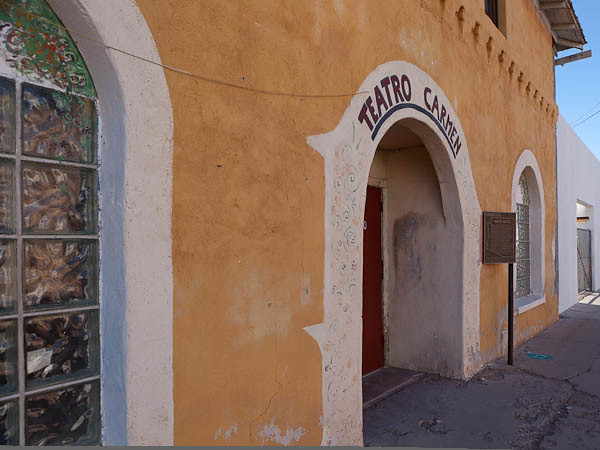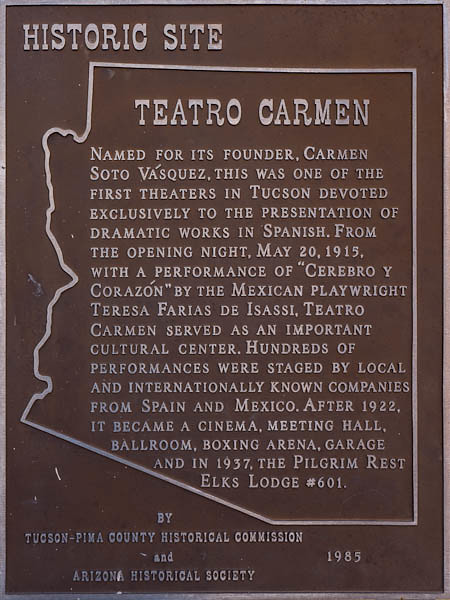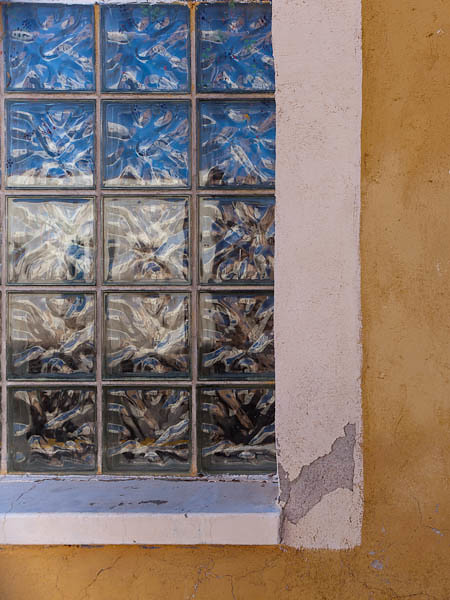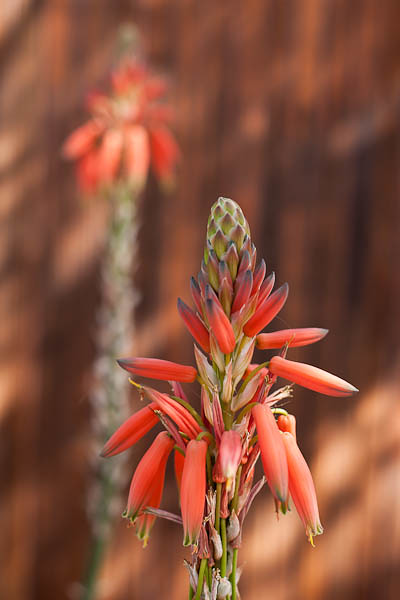I love the desert Southwest, wandering through the saguaro forests and the hidden canyons west of Tucson, but occasionally I feel the need for solid pavement under my feet, and that is when I go searching for the region’s historical buildings. Though Tucson is not considered an old city compared to most other cities, it is a city proud of its history.
In researching historical buildings in downtown Tucson, I found two resources of interest. First, there is a well established historical walk through the heart of downtown known as the Presidio Trail – also called the Turquoise Trail because one follows a turquoise painted line on the sidewalk to easily go from site to site. The brochure has information about each of the 23 sites and an easily followed map for when the turquoise line on the pavement goes in several directions, leaving trail followers too many choices.
One of the sites that is on both the Presidio and the Arizona Women’s walking tours is the Teatro Carmen. This was one of the first theaters in Tucson built to showcase Spanish language dramatic arts. It is named for its founder, Carmen Soto de Vasquez, a businesswomen and cultural leader in Tucson in the early 1900s.
She commissioned a prominent architect/builder, Manuel Flores, to build the theater. The building was designed in the Sonoran Mission style and in the heart of what is now Tucson’s historic district and had its first opening performance in 1915. Carmen Vasquez had the theater built to provide a place for Spanish literary productions as well as operas, musicals and melodramas.
Many of the sites along the Presidio Trail are marked with historical signs that provide additional information.
The second reference I used is a fairly new brochure, compiled by a coalition of women’s organizations and historical groups, called the Arizona Women’s Heritage Trail. It was designated a legacy program by the Arizona State Centennial Commission and has twelve sites that highlight a few of the women in early Tucson and their history.
Seven of the sites are on both walking tours, but each map has its own perspective, and so both are useful. There are also many restaurants, outdoor plazas with benches and drinking fountains, and many places you can duck inside for a respite from the Arizona sun if, like me, you choose a 90˚day to re-visit the past with a walk through history.
Although the building is in a state of partial disrepair, there are still hints of its fine construction and quiet beauty in the remaining details. I love the arches over the pressed window blocks and the brightly painted floral decoration. The painting is not only above the window, but remnants of painted flowers still can be seen on the window glass.
It is amazing to think that through this woman’s efforts a desert town became a cultural center for the arts and brought internationally acclaimed theater to Tucson. She was one of the original arts-instigators in Tucson.
—————-
Bo Mackison is a photographer and owner of Seeded Earth Studio LLC, living and photographing in southern Arizona.
















